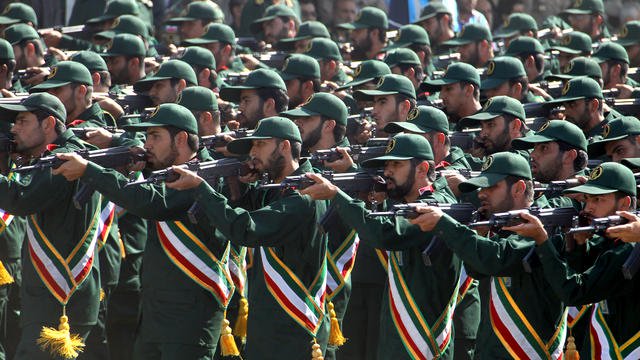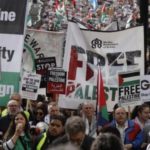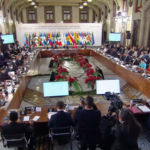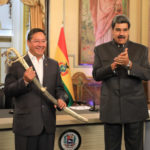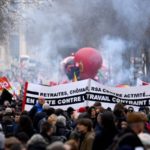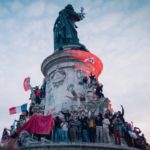Introduction
The article below, dated June 2021, deals with the general elections of 18 June 2021 in Iran. The outcome was the election of Judge Ebraim Raisi as president, to replace Hassan Rouhani no longer entitled to another term. Deeply shaken by this result, the leaders of the major capitalist countries did not contact Raisi to congratulate him. Their media headlines call Raisi an ‘ultra-conservative’ to show their anger at Raisi’s opposition to the suffocating ‘reforms’ imposed on Iran by imperialism. With one of these ‘reforms’, world imperialism with the USA at the head, presses Iran to become a member of the deadly FATF (Financial Action Task Force)* that Rouhani had partially accepted and partially imposed on the Iranian parliament. The article below (extracts) shows that the masses of Iran suffer immensely from the Western sanctions, but that through this election and through their resilience, they continue to defend their Revolutionary State.
On the Posadist IV International site – accessible from here, on the right of this page, the reader will find the full text of the following books by comrade J Posadas : “The Permanent Process of Revolution in Iran” and “Revolutionary State and Transition to Socialism”.
Posadists Today, 12 July 2021
IRAN IS A REVOLUTIONARY STATE
Iran Correspondent – June 2021
Explaining the revolutionary state is more difficult than explaining the bourgeois State or the workers’ State. Because the Revolutionary State is neither. It is a bit of the one and a bit of the other, in a complex and turbulent transition – but with a revolutionary leadership that has the confidence and support of the masses. Things get complicated when the bourgeois class prevails in some of the power organs of that State, as when Hassan Rouhani was in the government.
For 8 years, the Rouhani’s government dismantled, or undermined many of the achievements of the Revolutionary State, those of the Ahmadinejad’s government in particular. The State under Rouhani privatized a large number of public amenities and drastically increased the social differences. This undermined the confidence of the masses in the institutions of power and in the Revolutionary State itself. It plunged the country into an emergency situation that reached extremes. If Iran managed to maintain itself rather in the way Venezuela or Syria do, it has been with strong degradations and the formation of the rich and servile bourgeois layer lurking behind the many capitalist organs and forms.
Iran and Imperialism
Iran has suffered internal and external hemorrhages severe enough to bring the country to its knees. But as in Syria and may other places, imperialism shot itself in the foot with its own stifling plans. Had it not been for the internal crisis of imperialism and the asymmetric polarization of the world to its detriment, who knows if Iran would not have just imploded without any need for imperialist military intervention.
A Revolutionary State is not to be judged solely by the greater or lesser quantity of State property in it, or by just the stronger or lesser anti-capitalist nature of its government. What operates here is the pressing need of imperialism to pull out, once for all, this Iranian thorn out of its side.
This was abundantly clear during Dick Cheney’s massive attacks on Iran (2007), which failed due to the internal conflicts within the CIA. Iran does not suffer from a lack of democracy in the formal sense. It does not fail to support revolts, movements and revolutions in support of neighbouring Revolutionary States like Syria, Lebanon or Iraq. It suffers from the weakness of its relatively closed market compared to the world order of the capitalist system.
Global capitalism intends to continue to consolidate its world domination. It imposes suffocating embargoes on Iran, which the FATF enforces via controlling merchant vessels and financial embargoes. The previous Rouhani government had decided to comply with the FATF, but this is now being challenged by other organs of power opposed to it.
The FATF system pretends to fight money laundering, clandestine trade and the movement of money in suitcases. But in Iran, the FATF lets imperialism impose its sanctions on the country’s commercial and banking transactions. It was through the FATF that imperialism boarded Iranian oil tankers flying foreign flags, captured their crews and seized the oil on board. Imperialism cannot leave Iran alone. It wants Iran dead, destroyed and re-organized in its own interests. All this makes of Iran a Revolutionary State.
In the workers’ State, limits exist that make political revolution possible and the workers’ State capable of self-regeneration. The same applies to the Revolutionary State. The latter (in Iran) is neither popular, social, nor socialist – but transitory, revolutionary, oscillating and wavering, so that if it stops, it falls. But if it were to become an integral part of the global capitalist system, Iran would have to take a violent and bloody leap backwards. Many forces exist, however, that make such a reversal impossible through a simple process of gradual regression.
The Raisi government and usury
The animosity and hostility of the capitalist world towards Iran are reflected in the fact that, apart from Austria for its own reasons, the others have not recognised Raisi as the new president of the Islamic Republic. They have not yet provoked him either, to give him time to form a government of the “moderate center” based on the usual “mixed economy”, open market and free trade development via the numerous free ports and the “Special Economic Free Zones”.
If usury today were the web, the banks are the spider feeding on the productive parts of the economy, allowing the huge concentration of financial capital in just a few hands. Ahmadinejad (former president) informs that more than 70% of the population lives below the poverty line in Iran, and that another layer lives in absolute poverty without even one meal a day.
Today’s speculative and murderous bourgeoisie became fat during the war (Iran-Iraq). It seems to have been created for the express purpose of eliminating or excluding any revolutionary competitor. This bourgeoisie was never able to complete its counter-revolutionary work however. It never succeeded in bringing all the contradictions down firmly under the management of its private property regime. And contradictions there are. In all the organs and spheres of power, the banks, the lenders, the vultures, the dual currency, the black market; from the stock exchange and currency conversion (exchange) to the dispossession of the small and medium-sized savers; from import-export and large-scale smuggling, to the police and the army.
Iran hit rock bottom several times, as when Rafsanjani “made Khomeini drink hemlock.” His own words. It was not by accident that 16 years ago, the revolutionary Ahmadinejad drove Rafsanjani out to save the country from bankruptcy. He even managed to partially rearrange things.
To prevent Ahmadinejad from going any further however, his opponents went to fetch Hassan Rouhani. This dark character is always in the shadows, always counter-revolutionary and always on the side of the implacable and voracious Rafsanjani. The first Rouhani government 8 years ago ended relations with all the Revolutionary States and governments in the world. It stopped the “Peace Pipeline” (almost completely finished) that was to supply gas to Pakistan and India. He cut off relations with Syria, Bolivia, Venezuela and Brazil. Taking advantage of the crisis in Ukraine, Rouhani then allowed for Iran’s gas to be sold to the European countries via companies like Total and Exxonmobil. But this policy did not prosper either. In its second administration, the Rouhani government linked the fate of the country to the nuclear deal that imposed the quick destruction of reactors and centrifuges, opened the country up to espionage and surveillance, forced Iran to abandon control over its missile industry.
If the necessary revolt has now arrived, this is due to the character of the Revolutionary State. The masses of this Revolutionary State never stopped hoping, even when the rulers endangered their lives. Even when the government operated openly through the repressive organs of the usurpers, the Iranian masses never stopped regarding the State as their own. Remains to be seen whether they are going to be able to match – and in time – the surgical accuracy of the official attacks against them.
S.B. Iran Correspondent – June 2021
The feature image is that of the Guardians of the Revolution.
* https://iranintl.com/en/world/financial-‘noose’-faft-divides-iran-presidential-candidates
